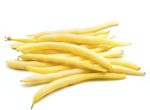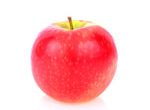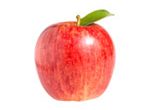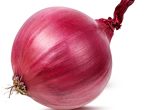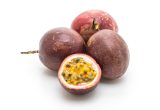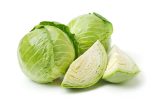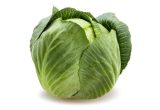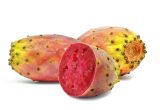Pomegranate tree

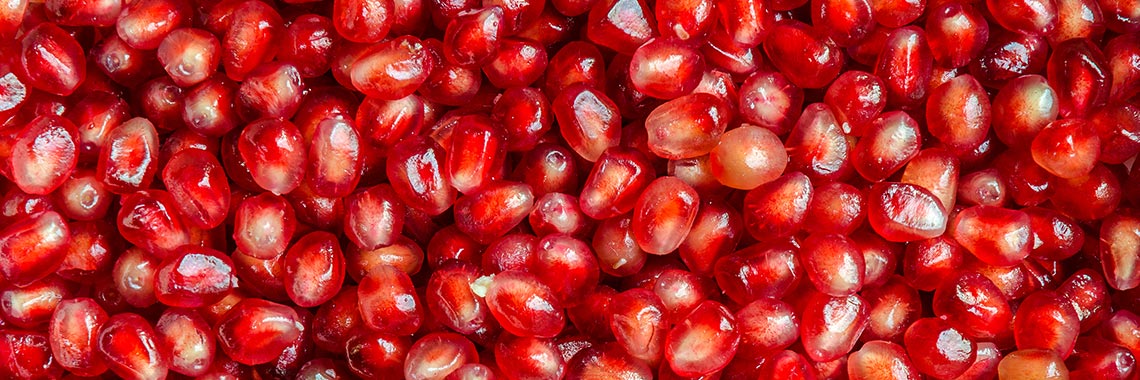
Description
- Native to Iran (Yousefi, 2011), the pomegranate tree (Punica granatum L.) belongs to the Punicaceae family.
- Its fruit, pomegranate, is one of the oldest fruits traditionally consumed in Turkey, in the Coruh Valley (Orhan, 2014).
- The pomegranate tree is particularly drought resistant, having a limited need for water (Galindo, 2014).
PHYSICAL AND ORGANOLEPTIC CHARACTERISTICS
- Anthocyanins (specifically delphinidin 3,5-diglucoside, pelargonidin 3-glucoside, pelargonidin 3,5-diglucoside, cyanidin 3-glucoside, and cyanidin 3,5-diglucoside) are flavonoid pigments that give pomegranate its red colour. The synthesis of these pigments is thought to be regulated by the PgUFGT and R2R3-PgMYB genes (Wang, 2018; Kaur, 2019).
- The quality of fruit production can be measured by the colour of the fruit (weak red). It seems that the irrigation of the tree during the growth of the fruit has an influence on the phenolic compounds of the fruit (anthocyanins – mainly responsible for the red colour (Ben-Simhon, 2011) and punicalagins also involved in fruit colour) (Mena, 2013).
- The polyphenols and hydrolyzable tannins in pomegranate are believed to be responsible for its astringent and slightly bitter taste (Benjamin, 2016).
- 51 volatile compounds are believed to be involved in the odour of pomegranate including 11 alcohols, 11 aldehydes, 11 ketones, 10 esters and 7 terpenoids (Mantzourani, 2018).
- Since pomegranate is a non-climacteric fruit (it ripens only on the tree), the timing of harvest is critical to optimise the quality and phytochemical properties of the fruit (Galindo, 2014).
COMPOSITION CHARACTERISTICS (excluding macronutrients, vitamins and minerals)
- Hydrolyzable tannins (ellagitanins), punicalagins, ellagic acid, and anthocyanins and other polyphenols are the compounds responsible for the beneficial effects of pomegranate. Ellagitanins and ellagic acids exhibit antioxidant and anti-inflammatory properties (Henning, 2019).
- In particular, ellagic acid, gallic acid and punicalagin reportedly exhibit inflammatory effects via the inhibition of molecules involved in inflammation such as PGE-2 and IL-6 (BenSaad, 2017).
- Hydrolyzable tannins (ellagitanins and gallotannins), ellagic acid and their common metabolites, urolithins, are reported to have numerous vasculo-protective effects (Wang, 2018).
- Anthocyanins in pomegranates have beneficial health properties such as antioxidant, anticancer and immunomodulatory activities (Kaur, 2019).
- Luteolin, a flavonoid compound, and ellagitannins are also reported to have anticancer properties. These two compounds are believed to inhibit tumour growth in the case of ovarian cancer. Ellagitanins are also believed to have anti-proliferative and anti-inflammatory activity in breast cancer (Liu, 2017).
RAW
The following values are approximate and depend on variety, season, ripeness, cultivation conditions, etc.
The average pomegranate provides 80.60 calories (kcal) per 100 g, i.e. 340 kJ. One pomegranate weighs on average 155 g, i.e. 124.93 kcal.
COMPOSITION TABLES
For each nutrient, the tables provide information on the content, minimum and maximum values, as well as the percentage of the Dietary Reference Values (DRVs) for 100 g net of pomegranate, pulp and seeds, raw.
MACRONUTRIENTS
| Constituent (g) | Average content |
Min-Max per 100g |
DRV% |
|---|---|---|---|
| Water | 79,4 | 77,90 - 81 | - |
| Fibers | 2,30 | 0,60 - 5,80 | - |
| Carbohydrates | 14,30 | - | 5,50 |
| Sugars | 13,30 | 13,20 - 14,30 | 14,78 |
| Lipids | 1,20 | 0,30 - 1,90 | 1,71 |
| Saturated fat | 0,07 | 0,065 - 0,20 | 0,35 |
| Protein | 1,44 | 0,10 - 2,10 | 2,88 |
| Constituent (g) | Amount | Min-Max | DRV% |
|---|---|---|---|
| Water | Ciqual 2020 (valeur issue des analyses Ciqual-Aprifel 2018) | - | - |
| Fibers | Ciqual 2020 (valeur issue des analyses Ciqual-Aprifel 2018) | - | - |
| Carbohydrates | Ciqual 2020 | - | Règlement (UE) N°1169/2011 du parlement Européen et du conseil du 25 octobre 2011 |
| Sugars | Ciqual 2020 (valeur issue des analyses Ciqual-Aprifel 2018) | - | Règlement (UE) N°1169/2011 du parlement Européen et du conseil du 25 octobre 2011 |
| Lipids | Ciqual 2020 (valeur issue des analyses Ciqual-Aprifel 2018) | - | Règlement (UE) N°1169/2011 du parlement Européen et du conseil du 25 octobre 2011 |
| Saturated fat | Ciqual 2020 (valeur issue des analyses Ciqual-Aprifel 2018) | - | Règlement (UE) N°1169/2011 du parlement Européen et du conseil du 25 octobre 2011 |
| Protein | Ciqual 2020 (valeur issue des analyses Ciqual-Aprifel 2018) | - | Règlement (UE) N°1169/2011 du parlement Européen et du conseil du 25 octobre 2011 |
Zoom on carbohydrates
- The energy of the pomegranate comes mainly from its carbohydrates, at 14.30 g per 100 g.
- This content is above the average amount found in fresh fruit: about 11.31 g per 100 g.
- Its carbohydrates are mainly fructose (7.10 g per 100 g) and glucose (6.20 g per 100 g).
Zoom on fibres
- The amount of fibre in pomegranate (2.30 g per 100 g) is lower than the average content in fresh fruit (2.77 g per 100 g).
Zoom on proteins
- Its protein content (1.44 g per 100 g) is higher than the average amount found in fresh fruit: 0.93 g per 100 g.
Zoom on lipids
- The fat content of pomegranate (1.20 g per 100 g) is higher than the average amount found in fresh fruit: 0.56 g per 100 g.
- Pomegranates are low in fat* as they contain no more than 3 g per 100 g.
MINERALS AND TRACE ELEMENTS
| Constituent | Average content |
Min-Max per 100g |
DRV% |
|---|---|---|---|
| Calcium (mg) | 9,50 | 3 - 11 | 1,19 |
| Chloride (mg) | 44,10 | - | 5,51 |
| Copper (mg) | 0,11 | 0,07 - 0,21 | 11 |
| Iron (mg) | 0,17 | NC - 0,35 | 1,21 |
| Iodine (µg) | < 20 | - | - |
| Magnesium (mg) | 12 | 3 - 15 | 3,20 |
| Manganese (mg) | 0,10 | 0,095 - 0,15 | 5 |
| Phosphorus (mg) | 27 | 8 - 42 | 3,86 |
| Potassium (mg) | 230 | 212 - 259 | 11,50 |
| Selenium (µg) | < 20 | - | - |
| Sodium (mg) | < 5 | 0 - NC | - |
| Zinc (mg) | 0,22 | NC - 0,41 | 2,20 |
| Constituent | Amount | Min-Max | DRV% |
|---|---|---|---|
| Calcium (mg) | Ciqual 2020 (valeur issue des analyses Ciqual-Aprifel 2018) | - | Règlement (UE) N°1169/2011 du parlement Européen et du conseil du 25 octobre 2011 |
| Chloride (mg) | Ciqual 2020 (valeur issue des analyses Ciqual-Aprifel 2018) | - | Règlement (UE) N°1169/2011 du parlement Européen et du conseil du 25 octobre 2011 |
| Copper (mg) | Ciqual 2020 (valeur issue des analyses Ciqual-Aprifel 2018) | - | Règlement (UE) N°1169/2011 du parlement Européen et du conseil du 25 octobre 2011 |
| Iron (mg) | Ciqual 2020 (valeur issue des analyses Ciqual-Aprifel 2018) | - | Règlement (UE) N°1169/2011 du parlement Européen et du conseil du 25 octobre 2011 |
| Iodine (µg) | Ciqual 2020 (valeur issue des analyses Ciqual-Aprifel 2018) | - | Règlement (UE) N°1169/2011 du parlement Européen et du conseil du 25 octobre 2011 |
| Magnesium (mg) | Ciqual 2020 (valeur issue des analyses Ciqual-Aprifel 2018) | - | Règlement (UE) N°1169/2011 du parlement Européen et du conseil du 25 octobre 2011 |
| Manganese (mg) | Ciqual 2020 (valeur issue des analyses Ciqual-Aprifel 2018) | - | Règlement (UE) N°1169/2011 du parlement Européen et du conseil du 25 octobre 2011 |
| Phosphorus (mg) | Ciqual 2020 (valeur issue des analyses Ciqual-Aprifel 2018) | - | Règlement (UE) N°1169/2011 du parlement Européen et du conseil du 25 octobre 2011 |
| Potassium (mg) | Ciqual 2020 (valeur issue des analyses Ciqual-Aprifel 2018) | - | Règlement (UE) N°1169/2011 du parlement Européen et du conseil du 25 octobre 2011 |
| Selenium (µg) | Ciqual 2020 (valeur issue des analyses Ciqual-Aprifel 2018) | - | Règlement (UE) N°1169/2011 du parlement Européen et du conseil du 25 octobre 2011 |
| Sodium (mg) | Ciqual 2020 (valeur issue des analyses Ciqual-Aprifel 2018) | - | - |
| Zinc (mg) | Ciqual 2020 (valeur issue des analyses Ciqual-Aprifel 2018) | - | Règlement (UE) N°1169/2011 du parlement Européen et du conseil du 25 octobre 2011 |
Zoom on minerals and trace elements
- Pomegranate contains significant amounts of potassium and copper. In fact, it provides the equivalent of:
- 11.50% of DRVs for potassium, i.e. 230 mg per 100 g;
- 11% of DRVs for copper, i.e. 0.11 mg per 100 g.
- The other minerals and trace elements are present in quantities representing less than 6% of DRVs.
VITAMINS
| Constituent | Average content |
Min-Max per 100g |
DRV% |
|---|---|---|---|
| Provitamin A Beta-carotene (µg) | 12,10 | 0 - NC | - |
| Vitamin A equivalent (µg) | 2,02 | - | 0,25 |
| Vitamin B1 (mg) | 0,054 | 0,03 - 0,08 | 4,91 |
| Vitamin B2 (mg) | < 0,01 | NC - 0,06 | - |
| Vitamin B3 (mg) | 0,23 | NC - 0,30 | 1,44 |
| Vitamin B5 (mg) | 0,37 | 0,36 - 0,60 | 6,17 |
| Vitamin B6 (mg) | 0,032 | NC - 0,11 | 2,29 |
| Vitamin B9 (µg) | 8,77 | NC - 60 | 4,39 |
| Vitamin C (mg) | 9,02 | 6,10 - 12,10 | 11,28 |
| Vitamin E (mg) | < 0,08 | NC - 0,60 | - |
| Vitamin K1 (µg) | < 0,80 | NC - 25,70 | - |
| Constituent | Amount | Min-Max | DRV% |
|---|---|---|---|
| Provitamin A Beta-carotene (µg) | Ciqual 2020 (valeur issue des analyses Ciqual-Aprifel 2018) | - | - |
| Vitamin A equivalent (µg) | Calcul à partir de la valeur Provitamine A Béta-carotène* | - | Règlement (UE) N°1169/2011 du parlement Européen et du conseil du 25 octobre 2011 |
| Vitamin B1 (mg) | Ciqual 2020 (valeur issue des analyses Ciqual-Aprifel 2018) | - | Règlement (UE) N°1169/2011 du parlement Européen et du conseil du 25 octobre 2011 |
| Vitamin B2 (mg) | Ciqual 2020 (valeur issue des analyses Ciqual-Aprifel 2018) | - | Règlement (UE) N°1169/2011 du parlement Européen et du conseil du 25 octobre 2011 |
| Vitamin B3 (mg) | Ciqual 2020 (valeur issue des analyses Ciqual-Aprifel 2018) | - | Règlement (UE) N°1169/2011 du parlement Européen et du conseil du 25 octobre 2011 |
| Vitamin B5 (mg) | Ciqual 2020 (valeur issue des analyses Ciqual-Aprifel 2018) | - | Règlement (UE) N°1169/2011 du parlement Européen et du conseil du 25 octobre 2011 |
| Vitamin B6 (mg) | Ciqual 2020 (valeur issue des analyses Ciqual-Aprifel 2018) | - | Règlement (UE) N°1169/2011 du parlement Européen et du conseil du 25 octobre 2011 |
| Vitamin B9 (µg) | Ciqual 2020 (valeur issue des analyses Ciqual-Aprifel 2018) | - | Règlement (UE) N°1169/2011 du parlement Européen et du conseil du 25 octobre 2011 |
| Vitamin C (mg) | Ciqual 2020 (valeur issue des analyses Ciqual-Aprifel 2018) | - | Règlement (UE) N°1169/2011 du parlement Européen et du conseil du 25 octobre 2011 |
| Vitamin E (mg) | Ciqual 2020 | - | Règlement (UE) N°1169/2011 du parlement Européen et du conseil du 25 octobre 2011 |
| Vitamin K1 (µg) | Ciqual 2020 (valeur issue des analyses Ciqual-Aprifel 2018) | - | Règlement (UE) N°1169/2011 du parlement Européen et du conseil du 25 octobre 2011 |
Zoom on vitamins
- Pomegranate contains a significant amount of vitamin C, as it provides the equivalent of 11.28% of DRVs, i.e. 9.02 mg per 100 g.
- The other vitamins are present in quantities representing less than 7% of DRVs.
*Calculation made: Beta-Carotene / 6 + retinol
POLYPHENOLS
| Constituent (mg) | Average content |
Min-Max per 100mg |
|---|---|---|
| Flavonoids (mg) | 1,10 | 1,10 - 1,10 |
| of which Flavanols (mg) | 1,10 | 1,10 - 1,10 |
| Total polyphenols | 1,10 | 1,10 - 1,10 |
| Constituent (mg) | Amount | Min-Max |
|---|---|---|
| Flavonoids | Phenol Explorer, version 3.6 Méthode utilisée : Chromatographie | - |
| of which Flavanols | Phenol Explorer, version 3.6 Méthode utilisée : Chromatographie | - |
| Total polyphenols | Phenol Explorer, version 3.6 Méthode utilisée : Chromatographie | - |
Zoom on polyphenols
- Polyphenols are substances with an antioxidant effect.
- Pomegranate contains 1.10 mg of polyphenols per 100 g. They are essentially flavanols, from the flavonoid family.
Nutrition and health claims
According to the definitions of nutrition claims as set out in Regulation (EC) No 1924/2006 on nutrition and health claims, and in view of the composition of pomegranate, the following claims may be used:
NUTRITION CLAIMS OF POMEGRANATE
- Fat-free (100 g of pomegranate contain less than 0.5 g of fat)
References
-
Agence nationale de sécurité sanitaire de l’alimentation, de l’environnement et du travail. Table de composition nutritionnelle des aliments Ciqual 2020. Consultée le 24/08/2020 depuis le site internet Ciqual https://ciqual.anses.fr/
- Benjamin O, Gamrasni D. Electronic Tongue as an Objective Evaluation Method for Taste Profile of Pomegranate Juice in Comparison with Sensory Panel and Chemical Analysis. Food Analytical Methods. 2016;9(6):1726–35.
- BenSaad LA, Kim KH, Quah CC, Kim WR, Shahimi M. Anti-inflammatory potential of ellagic acid, gallic acid and punicalagin A&B isolated from Punica granatum. BMC Complementary and Alternative Medicine. 2017;17:47.
- Ben-Simhon Z, Judeinstein S, Nadler-Hassar T, Trainin T, Bar-Ya’akov I, Borochov-Neori H, Holland D. A pomegranate (Punica granatum L.) WD40-repeat gene is a functional homologue of Arabidopsis TTG1 and is involved in the regulation of anthocyanin biosynthesis during pomegranate fruit development. Planta. 2011;234(5):865-81.
- Galindo A, Calín-Sánchez A, Collado-González J, Ondoño S, Hernández F, Torrecillas A, Carbonell-Barrachina AA. Phytochemical and quality attributes of pomegranate fruits for juice consumption as affected by ripening stage and deficit irrigation. J Sci Food Agric. 2014;94(11):2259-65.
- Henning SM, Yang J, Lee R-P, Huang J, Hsu M, Thames G, Gilbuena I, Long J, Xu Y, Park EH, Tseng CH, Kim J, Heber D, Li Z. Pomegranate Juice and Extract Consumption Increases the Resistance to UVB-induced Erythema and Changes the Skin Microbiome in Healthy Women: a Randomized Controlled Trial. Scientific Reports. 2019;9:14528.
- Kaur R, Kapoor N, Aslam L, Mahajan R. Molecular characterization of PgUFGT gene and R2R3-PgMYB transcription factor involved in flavonoid biosynthesis in four tissues of wild pomegranate (Punica granatum L.). Journal of Genetics. 2019;98(4):94.
- Liu H, Zeng Z, Wang S, Li T, Mastriani E, Li Q-H, Bao HX, Zhou YJ, Wang X, Liu Y, Liu W, Hu S, Gao S, Yu M, Qi Y, Shen Z, Wang H, Gao T, Dong L, Johnston RN, Liu SL. Main components of pomegranate, ellagic acid and luteolin, inhibit metastasis of ovarian cancer by down-regulating MMP2 and MMP9.Cancer Biology & Therapy. 2017;18(2): 990–9.
- Mantzourani I, Kazakos S, Terpou A, Mallouchos A, Kimbaris A, Alexopoulos A, Bezirtzoglou E, Plessas S. Assessment of Volatile Compounds Evolution, Antioxidant Activity, and Total Phenolics Content during Cold Storage of Pomegranate Beverage Fermented by Lactobacillus paracasei K5. Fermentation. 2018;4(4):95.
- Mena P, Galindo A, Collado-González J, Ondoño S, García-Viguera C, Ferreres F, Torrecillas A, Gil-Izquierdo A. Sustained deficit irrigation affects the colour and phytochemical characteristics of pomegranate juice. J Sci Food Agric. 2013;93(8):1922-7.
- Neveu V, Perez-Jiménez J, Vos F, Crespy V, du Chaffaut L, Mennen L, Knox C, Eisner R, Cruz J, Wishart D, Scalbert A. (2010) Phenol-Explorer: an online comprehensive database on polyphenol contents in foods. Database, doi: 10.1093/database/bap024. Full text (free access)
- Orhan E, Ercisli S, Esitken A, Sengul M. Molecular and morphological characterization of pomegranate (Punica granatum L.) genotypes sampled from Coruh Valley in Turkey. Genet Mol Res. 2014;13(AOP).
- Règlement (CE) N° 1924/2006 du Parlement européen et du Conseil du 20 décembre 2006 concernant les allégations nutritionnelles et de santé portant sur les denrées alimentaires.
- Règlement (UE) N°432/2012 de la Commission du 16 mai 2012 établissant une liste des allégations de santé autorisées portant sur les denrées alimentaires, autres que celles faisant référence à la réduction du risque de maladie ainsi qu’au développement et à la santé infantiles.
- Règlement (UE) n°1169/2011 du Parlement européen et du Conseil du 25 octobre 2011 concernant l’information des consommateurs sur les denrées alimentaires, modifiant les règlements (CE) n°1924/2006 et (CE) n°1925/2006 du Parlement européen et de Conseil et abrogeant la directive 87/250/CEE de la Commission, la directive 90/496/CEE du Conseil, la directive 1999/10/CE de la Commission, la directive 200/13/CE du Parlement européen et du Conseil, les directives 2002/67/CE et 2008/5/CE de la Commission et le règlement (CE) n°608/2004 de la Commission.
- Wang D, Özen C, Abu-Reidah IM, Chigurupati S, Patra JK, Horbanczuk JO, Jóźwik A, Tzvetkov NT, Uhrin P, Atanasov AG. Vasculoprotective Effects of Pomegranate (Punica granatum L.). Frontiers in Pharmacology 2018;9:544.




